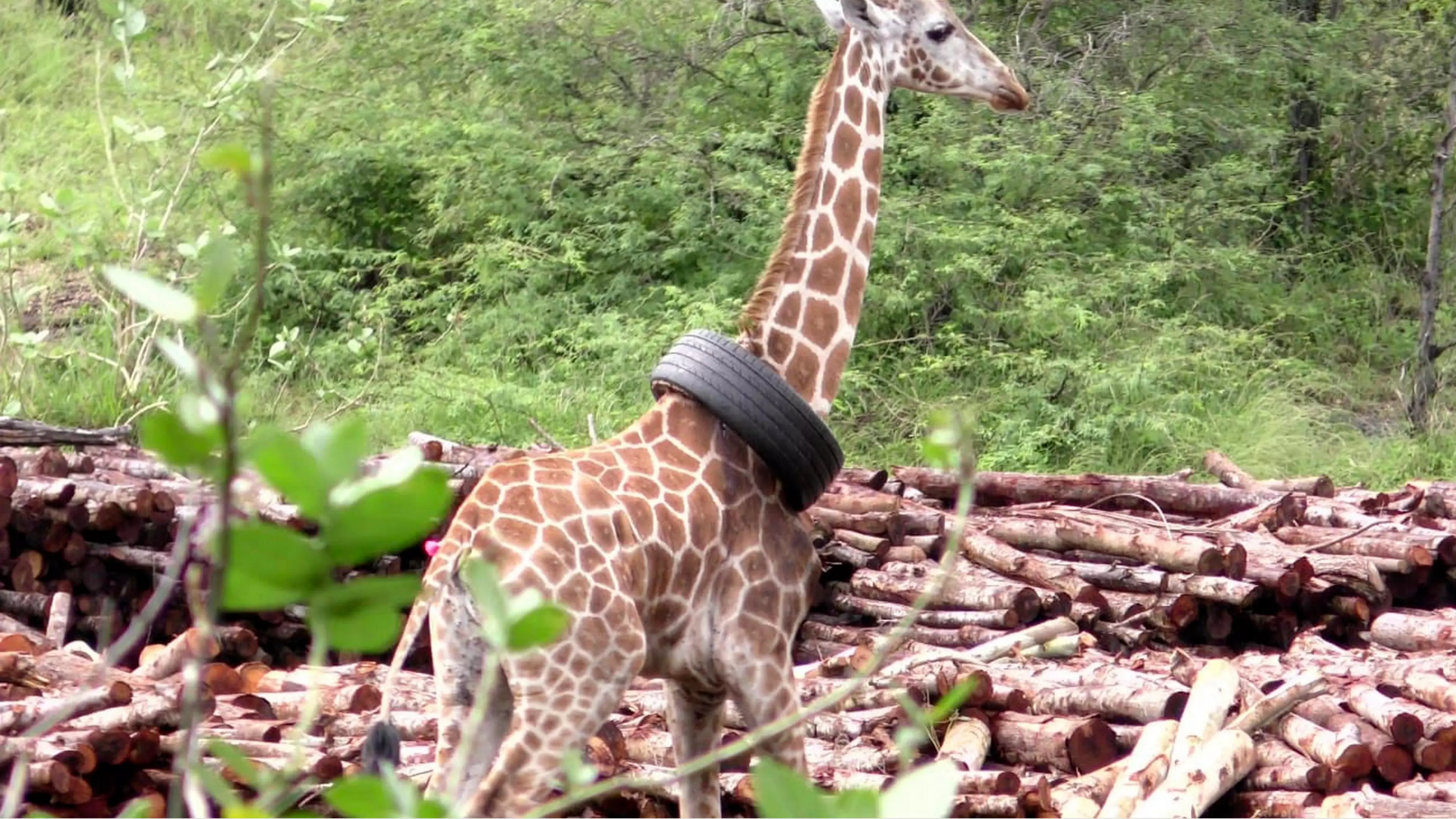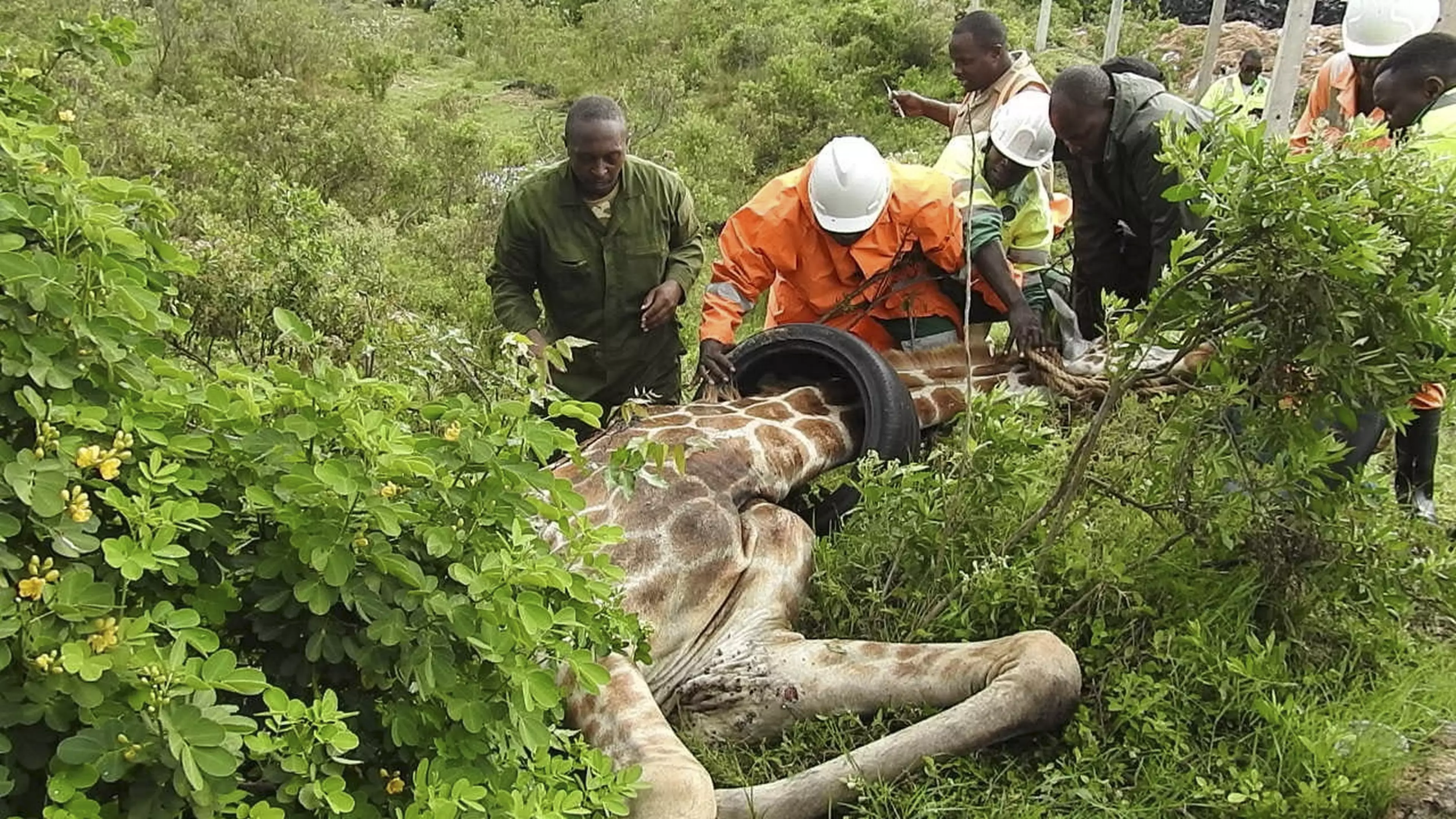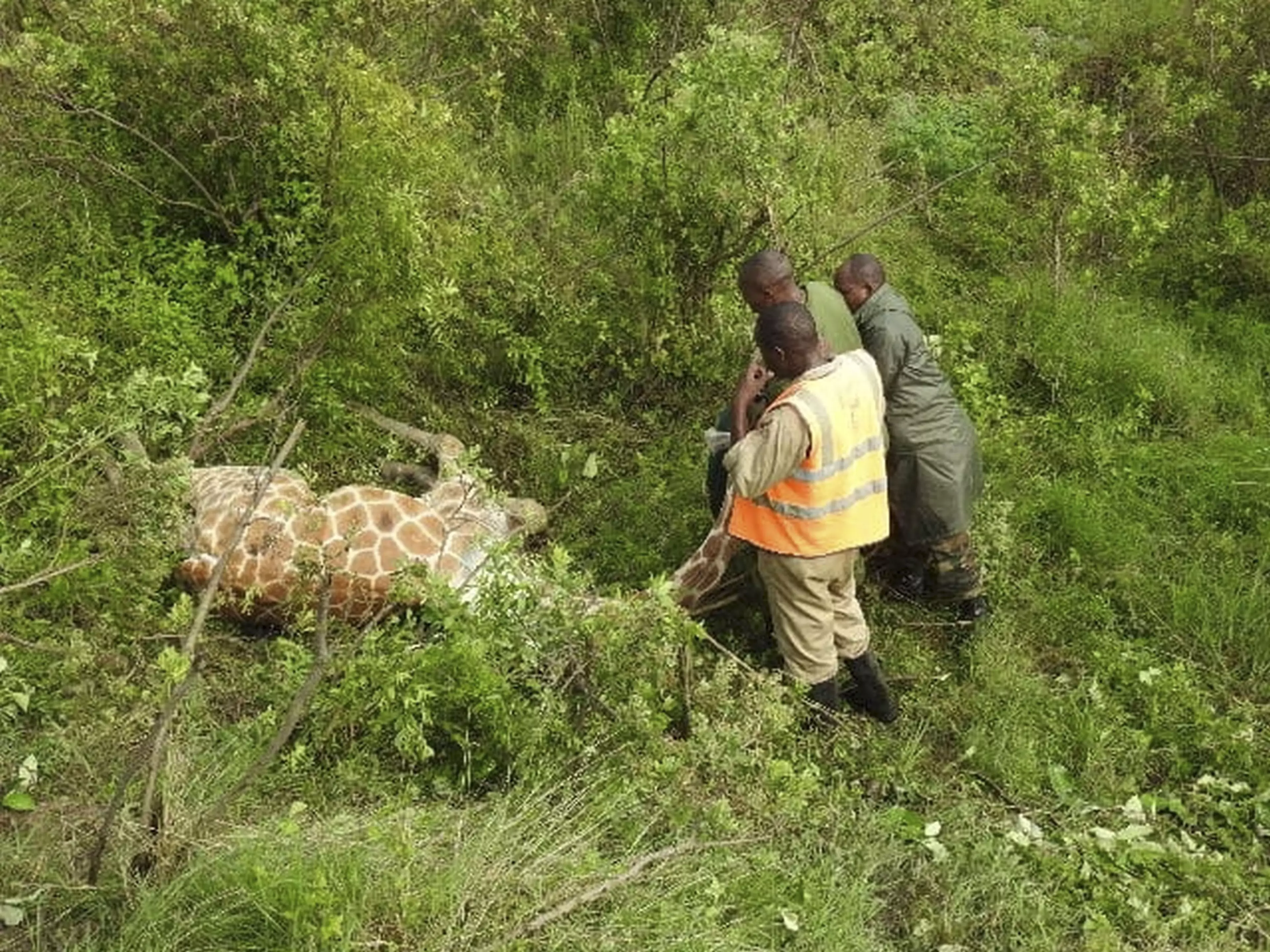
Staff at a wildlife park in Kenya had to step in to rescue a giraffe with a tyre stuck around her neck.
The giraffe, who lives at the Sheldrick Wildlife Trust in Haller Park, Mombasa, Kenya, somehow managed to get herself caught up in the unfortunate situation.
The tyre had been there so long the poor animal had a wound to her neck.

Rob Brandford, executive director from the Sheldrick Wildlife Trust, said: "We are not aware of any prior incidents of giraffes being treated for injuries caused by tyres, although our SWT/KWS teams have treated 95 giraffes to date for snare injuries.
Advert
"But we believe this tyre was discarded as rubbish and was not used as a trap.
"Giraffes are one of the more difficult species to anaesthetise - it requires a whole team working nimbly and quickly, tackling several hurdles before the treatment even begins."
Staff approached the giraffe on foot and hit it with a specially prepared dart that carried enough anaesthetic for an animal her size.
Rob explained: "Teams from the Sheldrick Trust and Kenya Wildlife Service then used ropes to gently guide her down to the ground so that she did not injure herself, including her delicately long neck, since trauma or malposition could be fatal.
Advert
"Once on the ground, the anaesthetic was reversed and team members manually restrained her.

"This is because giraffes can't be under anaesthetic for long since, among other reasons, anaesthesia alters a giraffe's ability to pump blood around its massive body. So, the minute a giraffe is safely down on the ground, the anaesthetic is reversed and the giraffe is manually restrained."
The team cut the tyre away before thoroughly cleaning the wound, disinfecting it and then coating it with antibiotic spray and green clay - a natural substance that aids healing.
Advert
She was also given a long-acting antibiotic - to keep any potential infections at bay - and anti-inflammatory medications.

Rob added: "As the giraffe had a positive prognosis for a complete recovery, it was not necessary to monitor her or provide any follow-up treatment.
"We can say for certainty that she must be much relieved following the removal of the troublesome tyre, which would have been causing her pain and considerable discomfort."
Advert
Featured Image Credit: Caters
Topics: World News, Animals